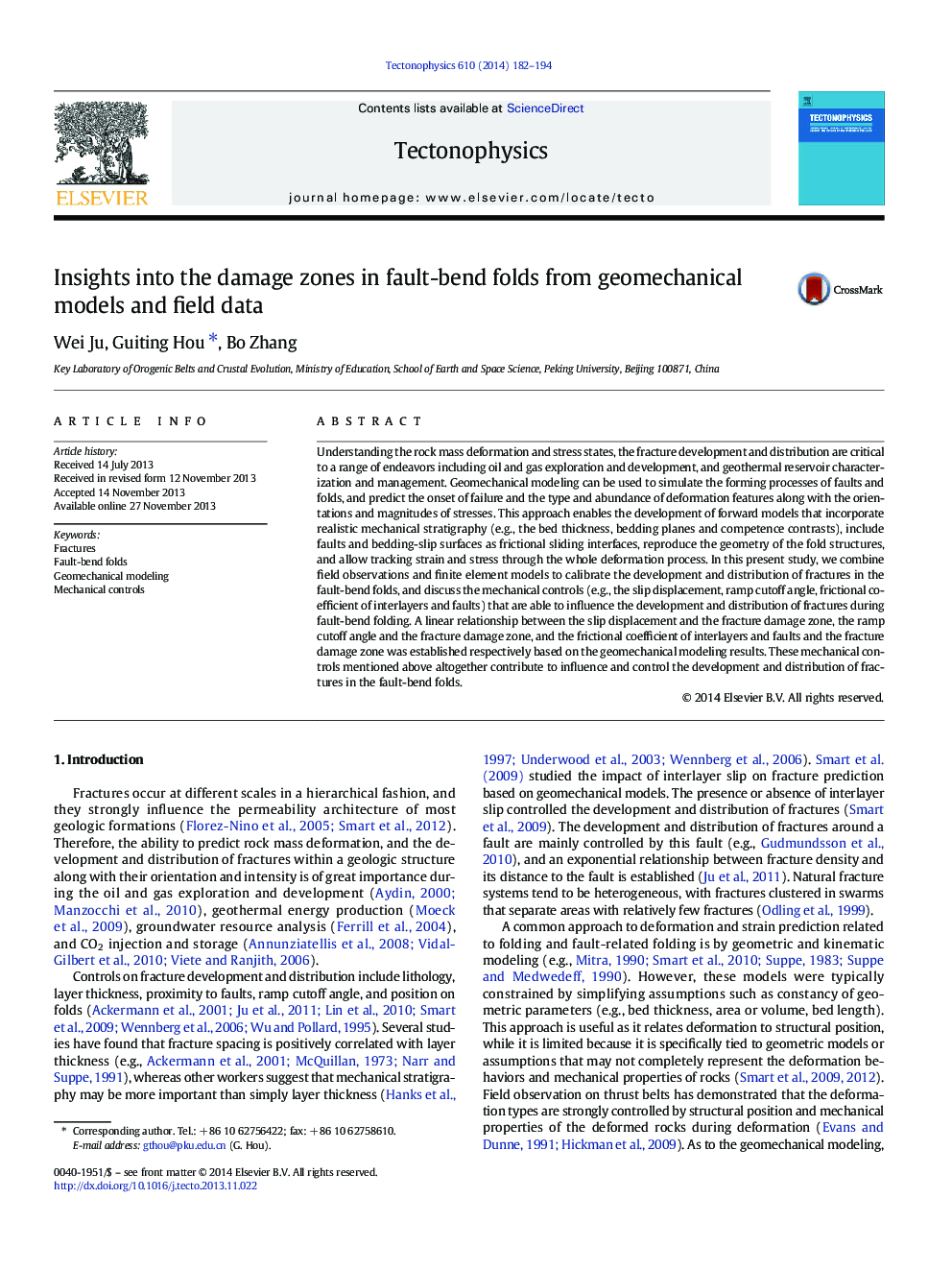| Article ID | Journal | Published Year | Pages | File Type |
|---|---|---|---|---|
| 4692067 | Tectonophysics | 2014 | 13 Pages |
•The development and distribution of fractures in fault-bend folds was calibrated.•The mechanical factors for fractures in fault-bend folds were discussed.•Linear relationships between factors and fracture damage zones were established.
Understanding the rock mass deformation and stress states, the fracture development and distribution are critical to a range of endeavors including oil and gas exploration and development, and geothermal reservoir characterization and management. Geomechanical modeling can be used to simulate the forming processes of faults and folds, and predict the onset of failure and the type and abundance of deformation features along with the orientations and magnitudes of stresses. This approach enables the development of forward models that incorporate realistic mechanical stratigraphy (e.g., the bed thickness, bedding planes and competence contrasts), include faults and bedding-slip surfaces as frictional sliding interfaces, reproduce the geometry of the fold structures, and allow tracking strain and stress through the whole deformation process. In this present study, we combine field observations and finite element models to calibrate the development and distribution of fractures in the fault-bend folds, and discuss the mechanical controls (e.g., the slip displacement, ramp cutoff angle, frictional coefficient of interlayers and faults) that are able to influence the development and distribution of fractures during fault-bend folding. A linear relationship between the slip displacement and the fracture damage zone, the ramp cutoff angle and the fracture damage zone, and the frictional coefficient of interlayers and faults and the fracture damage zone was established respectively based on the geomechanical modeling results. These mechanical controls mentioned above altogether contribute to influence and control the development and distribution of fractures in the fault-bend folds.
